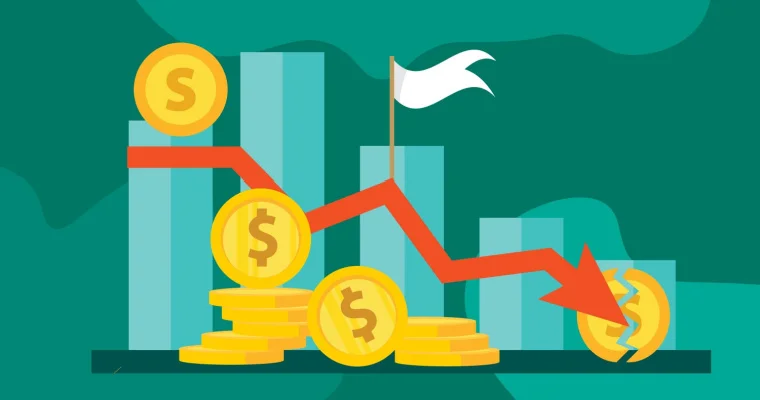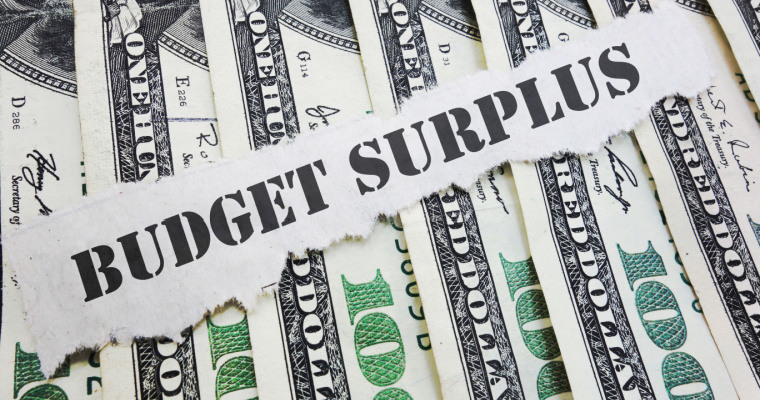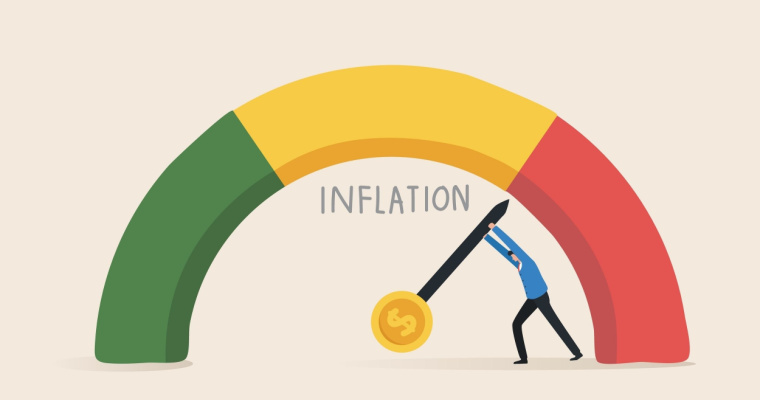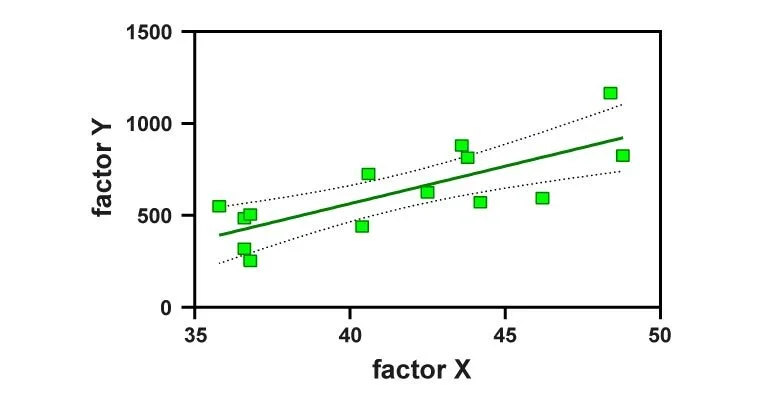What Is A Trademark? How Is It Different From Copyright?

Trademark is a recognisable phrase, word, emblem, or symbol that identifies a particular product and distinguishes it from all other products of its sort. A trademark recognises the company’s brand ownership and differentiates a product from its own. Trademarks are a type of intellectual property, whether registered or not. Read on to get a deeper understanding of what is a trademark, its types, benefits and how it differs from a copyright.
What is a Trademark?
Trademarks aid in product differentiation within the judicial and commercial systems, and they also play a crucial role with customers. Words and design features that identify a good or service’s creator, owner, or developer are recognised and protected using trademarks. They can stop third parties from using a company’s goods or services without their consent. Additionally, they forbid any marks that could be mistaken for an already-existing mark.
A company cannot use a sign or brand name if it is identical to one already registered, especially if the products or services are connected in appearance, sound, or meaning. For instance, it is illegal for a soft drink company to have a name that sounds like Coke or a symbol that resembles Coca-Cola.
Trademarks in the United States are designated with the ® symbol and registered with the United States Patent and Trademark Office (USPTO). But, trademarks do not need to be registered to grant a business or person rights of protection. With the TM symbol, one can identify unregistered trademarks. The trademark holder indicates that they are employing common law to safeguard their interests by using this symbol.
Trademark regulations are perpetual. It denotes that the Trademark belongs to its proprietor for the duration of the good or service. Yet, there are several exceptions. First, the user must use the Trademark to enjoy trademark laws. Thus, for the trademark law to be enforceable, a business or individual must consistently manufacture, produce, market, and sell a product with a specific trademark. Every five years, one can do this by submitting a section 8 declaration to the USPTO. Loss of registration may occur if this is not filed.
Types of Trademarks
There are several types of trademarks. The major ones include: descriptive, suggestive, arbitrary, and fanciful. The strongest trademarks are arbitrary and fanciful, which defend invented names and marks or words taken out of context. The next strongest trademarks are suggestive ones, which aim to spark the consumer’s imagination. The last type of Trademark and the least potent describes the products and services.
Also Read: How To Apply For Trademark Registration Online For Your Business?
Trademark Signs and Symbols
When you initially start using a trademark or service mark, you need to use the appropriate Trademark sign, either a TM or an SM. Although using the SM symbol, which indicates services, is possible, doing so is not required. Whether the Trademark is used in connection with goods or services, businesses often only use the sign for trademarks, which is denoted by the letter “TM.”
The area of registration is where the most significant difference can be found in relation to symbol use. In order to make use of the “R” ® symbol, your Trademark must be registered with the federal government.
The following is a rundown of when each of the three most common types of trademark symbols should be used:
- Unregistered Trademark ™: The initials T & M, which are often styled as TM, is used to indicate a trademark that has not been registered. This means that your claim to ownership is legally protected.
- Service mark ℠: A service mark gives notice that you are claiming common-law protection over services rather than items. This may include assistance in the areas of law and finance, as well as medical care. It is denoted by the letters SM.
- Registered Trademark ®: Only those who have been awarded registration from the United States Patent and Trademark Office are permitted to use registered trademarks, which are denoted by the letter “R” enclosed within a circle (®). (USPTO). In contrast to unregistered trademarks and service marks, this symbol shows that you are the presumed legal owner of the Trademark in question.
What Can be Trademarked?
Follow the list below to learn what can be trademarked.
- Product names and taglines
- Logos
- Sounds
- Smells
- Brand names
- Colour combinations
What Cannot be Trademarked?
Go through the list below to find what can’t be trademarked.
- Any trademarks that are currently in use or that are uncannily similar to those already in use
- Generic terms for descriptions
- Frequently used words or messages
- Blatantly religious texts and quotes
Your mark must be unique and unlikely to be confused with an existing trademark to qualify for federal trademark protection. When choosing a trademark, one has to pay attention to what you are selling, how it differs from the competition, and what makes it distinctive. Stay away from generalised descriptions of your goods or services; the more unusual your proposed mark is, the higher your chances of accepting your application.
Benefits of a Trademark
Follow the below pointers and explore the benefits of trademarks.
1. A trademark is an intangible asset that increases the worth of a firm. It sets the product or service apart from the market’s leading rivals. It might resemble the brand since it stands out from the competition, attracts customers, and is simple to recognise. It serves as a tool for corporate marketing. A trademark aids the consumer in purchasing decisions by symbolising loyalty to the business, reputation, and honesty. Like tangible assets, trademarks can be bought, sold, or used as collateral to get a loan from a financial institution. So, all firms must safeguard this priceless asset.
2. The Trademark will be valid for the following ten years after being registered. No legal responsibilities, fees, or other statutory requirements relating to maintaining trademarks must be fulfilled in the interim between these ten years. Like a passport, a trademark certificate can also be renewed right before it expires, allowing the owner to continue to protect their brand from third parties. If we pay close attention, trademark registration can be kept up and is far less expensive in the long run than domain registration.
3. Due to the fierce competition in today’s industries, branding and advertising are essential for all businesses. Businesses invest in various advertising mediums to market their brand to consumers, including the internet, newsprint, radio, and TV. Anyone can claim a brand if it is not trademarked. Thus, submitting a trademark application for the companies before launching any marketing initiatives is crucial.
4. Trademark registration can be a powerful tool in the fight against unfair competition. Today’s market is flooded with imitators and counterfeiters who take advantage of utilised brand names for their gain. An effective deterrence against such unfair competition is a registered trademark. The trademark owner has recourse under the trademark statute if a third party uses his mark without authorisation or copies it.
5. Customers associate a product’s quality with the brand name, and this association fosters an image of that brand’s quality in the marketplace that aids in drawing in new customers because they can tell a product’s quality by its logo or brand name. A trademark acknowledges the product’s high quality.
6. Customers tend to find your stuff more. It distinguishes your product and product identity from those of your current and anticipated competitors and functions as an effective marketing tool. The logo can convey your organisation’s mission, values, or distinguishing features.
7. Everyone can recognise the proven quality of your goods and services, which fosters consumer confidence and goodwill. It aids in developing devoted, lifelong customers who choose one brand over another.
How do Trademarks Differ from Patents and Copyrights?
A quick comparison chart below summarises the characteristic qualities and applications of each of these rights.
| Copyright | Trademark | Patent | |
| Intellectual Property Type | Expressions of the arts, literature, or the dramatic arts such as songs, music, movies, poetry, fiction and non-fiction writing, etc. | The “mark” of a firm or brand is anything that identifies it as the provider of a certain service or item (such as its name, logo, slogan, etc.). | Innovation must be a produced product, an instrument, chemical composition or a manufacturing process |
| Protection Requirements | A type of artistic expression that has been manifested and now exists as a tangible entity. | A one-of-a-kind brand name, logo, symbol, design, or motto that is specifically associated with its representative source. | An original discovery that has not been made before, one that is both inventive and has the potential to be useful in a variety of fields. |
| Duration of Rights | The laws governing intellectual property are subject to copyright protection for the remainder of the artist’s life plus an additional 70 years. | If the source continues to utilise the Trademark in question in commercial activities, trademark laws continue to be in effect indefinitely. | Patents are types of intellectual property rights that have a finite duration and often expire after 20 years at the most. |
| Rights Provided to Owner | Right to distribute or transmit the works to the public, make a copy of the works, and lend or rent the works. | The right to use something and to restrict other parties from using it in a way that is comparable and leads to doubt about the source of the information. | The privilege of using the patented innovation and preventing others from using, replicating, importing, or selling the patented invention themselves. |
Final Word
A trademark identifies your products and services and distinguishes you from rival brands; it might be a word, phrase, symbol, or design. A service mark is used for services, whereas a trademark is used for commodities. A trademark grants you the sole right to employ your mark and the ability to stop rivals from using a mark that is identical to or strikingly similar to yours. So, if you want to keep your company uptight, you must get the trademarks right to move up in the business.
FAQs on What is a Trademark
Ans: It is critical to safeguard your company name. Additionally, you might wish to trademark your logo and any catchphrases or taglines you plan to use regularly to represent your company.
Ans: No, unless you are applying from outside the United States, you are not legally needed to have legal representation while registering for a trademark. Having said that, it is strongly advised that you choose to keep one. An expert lawyer can represent you in all interactions with the USPTO and assist with legal advice during the application process.
Ans: If you are the owner of a trademark, it is up to you to protect it and put an end to infringement. USPTO does not enforce the trademarks. The best course of action is if you discover a company using your Trademark, contact a trademark lawyer to discuss your rights and the best course of action moving forward.
Ans: A trademark is dead if its federal trademark registration rights have expired. It can happen if the original owner neglected to submit renewal applications or a petition to revoke the mark was submitted. A trademark is not necessarily free to be used just because it is declared dead.
Disclaimer
This article is solely for educational purposes. Navi doesn't take any responsibility for the information or claims made in the blog.

Customer’s Feedback
No comments found.What is Primary Deficit? – Example, Formula & Measures
What is a Primary Deficit? Primary Deficit is the difference between the current year’s fiscal... Read More »What is Financial Ratio Analysis? – Objectives, Types and Uses
Ratio analysis is a process that allows people to assess the financial health of a company. Using t... Read More »Treasury Management – Its Functions, Types and Benefits
Even the most well-funded business can run into huge losses if it does not have the resources to fu... Read More »How Anti Money Laundering Combats Financial Crime?
Anti Money Laundering (AML) is a system of rules, laws, regulations, and procedures that financial ... Read More »What is Salvage Value and Why is it Useful?
Salvage value, also called scrap value, is the value of a specific asset after its useful life. In ... Read More »Key Difference Between Factoring and Forfaiting in Trade Finance
Factoring and forfaiting have grown in prominence as major sources of export financing. For the uni... Read More »What is Factoring and its Importance in Financial Management?
Factoring is a practice in which a company buys the accounts receivable of another company at a dis... Read More »What is Budget Surplus: Its Effects, Advantages and Impact with Examples
When the revenue of a government, business, or individual exceeds its expenses in a given period, i... Read More »What is Balanced Budget – Components, Importance and Examples
In financial planning or the budgeting process, a balanced budget is one in which total anticipated... Read More »What Does Inflationary Gap Mean in Macroeconomics?
In macroeconomics, the difference between current and potential GDP is known as a gap. This gap is ... Read More »What is Accounting Conservatism in Finance and How Does it Work?
Accounting conservatism involves a conservative set of accounting guidelines wherein the worst-case... Read More »Multiple Linear Regression (MLP) – Uses, Formula and Examples
Various statistical models help in establishing a relationship between different variables. Multipl... Read More »Top 10 Chit Fund Schemes in India in 2023
Chit funds are one of the most popular return-generating saving schemes in India. It is a financial... Read More »10 Best Gold ETFs in India to Invest in April 2023
Gold ETFs or Gold Exchange Traded Funds are passively managed funds that track the price of physica... Read More »10 Best Demat Accounts in India for Beginners in 2023
Creation of Demat accounts revolutionised the way trades were conducted at the stock exchanges. It... Read More »20 Best Index Funds to Invest in India in April 2023
What is an Index Fund? An index fund is a type of mutual fund or exchange-traded fund (ETF) that... Read More »Best Arbitrage Mutual Funds to Invest in India in April 2023
Arbitrage funds are hybrid mutual fund schemes that aim to make low-risk profits by buying and sell... Read More »10 Best SIP Plans in India to Invest in April 2023
What is SIP? SIP or Systematic Investment Plan is a method of investing a fixed amount in ... Read More »10 Best Corporate Bond Funds in India to Invest in April 2023
Corporate bond funds are debt funds that invest at least 80% of the investment corpus in companies ... Read More »10 Best Bank for Savings Account in India [Highest Interest Rate 2023]
Savings account is a type of financial instrument offered by several banks. It lets you safely depo... Read More »






























